Development and Properties of a Similar Material to Coal
Abstract
:1. Introduction
2. Tests
2.1. Selection of the Similar Material
2.2. Specimen Preparation and Test Steps
- (1)
- Raw coal collected from an outburst-prone coal seam was crushed using a jaw crusher and screened using standard sieves. Then, the coal with the preset particle size distribution was mixed uniformly;
- (2)
- The aggregate and binder were weighed in strict accordance with the proportion, and the water was also measured according to the proportion;
- (3)
- The binder was dissolved in water and, after sufficient dissolution, it was poured into the aggregate and stirred;
- (4)
- The similar material, after sufficient stirring, was poured into a mold and compressed under the preset pressure for 10 min;
- (5)
- The specimens were demolded, labeled, and cured.
2.3. Tests of Basic Physical and Mechanical Parameters
- (1)
- Unit weight
- (2)
- Porosity
- (3)
- Adsorption and desorption properties
- (4)
- Tests of mechanical parameters
3. Influencing Factors
- (1)
- Influencing factors of the unit weight and porosity of the similar material.
- (2)
- Influencing factors of adsorption and desorption properties of the similar material.
- (3)
- Influencing factors on compressive strength.
4. Conclusions
Author Contributions
Funding
Data Availability Statement
Conflicts of Interest
References
- Kang, H.P.; Xu, G.; Wang, B.M.; Wu, Y.Z.; Jiang, P.F.; Pan, J.F.; Ren, H.W.; Zhang, Y.J.; Pang, Y.H. Forty years development and prospects of underground coal mining and strata control technologies in China. J. Min. Strat. Control Eng. 2019, 1, 013501. [Google Scholar]
- Hang, L.; Dongke, C.; Debing, M. Current status of deep mining and disaster prevention in China. Coal Sci. Technol. 2016, 44, 39–46. [Google Scholar]
- Wang, E.Y.; Zhang, G.R.; Zhang, C.L.; Li, Z. Research progress and prospect on theory and technology for coal and gas outburst control and protection in China. J. China Coal Soc. 2022, 47, 1–40. [Google Scholar]
- Gong, Y.; Zhu, G.; Jiang, Y.; Shi, D. Experimental study on the proportion of similar materials for different geological structures of coal seams. J. Min. Sci. Technol. 2022, 7, 267–274. [Google Scholar] [CrossRef]
- Wang, Y. Dynamic Law of Overburden Failure in Mining of Shallow Near-Spaced Double Coal Seams. Mather’s Thesis, China University of Mining and Technology, Xuzhou, China, 2021. [Google Scholar] [CrossRef]
- Hudeček, V. Analysis of safety precautions for coal and gas outburst-hazardous strata. J. Min. Sci. 2008, 44, 464–472. [Google Scholar] [CrossRef]
- Liu, G.; Xian, J.; Zang, D. Research, application and direction of monitoring technologies in geotechnical engineering model tests. J. China Univ. Min. Technol. 2022, 1–17. [Google Scholar] [CrossRef]
- Ujihira, M.; Isobe, T.; Higuchi, K. On the Process of Destruction of Porous Material in which High Pressure Gas is Involved. J. Min. Metall. Inst. Jpn. 1984, 100, 397–403. [Google Scholar] [CrossRef]
- Zhang, J.; Wei, F. Simulated outburst test of gas-bearing coal. Min. Saf. Environ. Prot. 2002, 1, 7–9+12–67. [Google Scholar]
- Deng, Q.; Luan, Y.; Wang, Y. Simulation experiment of coal and gas outbursts. Saf. Coal Mines 1989, 11, 5–10. [Google Scholar]
- Zhang, C.; Zhao, Y.; Han, P.; Bai, Q. Coal pillar failure analysis and instability evaluation methods: A short review and prospect. Eng. Fail. Anal. 2022, 138, 106344. [Google Scholar] [CrossRef]
- Yao, W.; Pang, J.; Ma, Q.; Lyimo, H. Influence and sensitivity analysis of thermal parameters on temperature field distribution of active thermal insulated roadway in high temperature mine. Int. J. Coal Sci. Technol. 2020, 8, 47–63. [Google Scholar] [CrossRef]
- Cun, Z.; Bo, L.; Ziyu, S.; Jinbao, L.; Jinlong, Z. Breakage mechanism and pore evolution characteristics of gangue materials under compression. Acta Geotech. 2022, 1–13. [Google Scholar] [CrossRef]
- Xu, J.; Tao, Y.; Yin, G.; Li, S.; Wang, Z. Development and application of coal and gas outburst simulation test device. Chin. J. Rock Mech. Eng. 2008, 11, 2354–2362. [Google Scholar]
- Ou, J. Study on Simulation Experiments of Coal and Gas Outburst Evolution, Doctoral Dissertation. Ph.D. Thesis, China University of Mining and Technology, Xuzhou, China, 2012. [Google Scholar]
- Tang, J.; Yang, S.; Wang, Y.; Lü, J. Experiment of coal and gas outbursts underground stress and gas pressure in deep mines. Rock Soil Mech. 2014, 35, 2769–2774. [Google Scholar] [CrossRef]
- Li, Y.; Zhang, Z. Experimental study on similar soil materials in similar model tests. In Proceedings of the 12th Annual Conference of the China Civil Engineering Society and the 14th Annual Conference of the Tunnel and Underground Engineering Branch, Shanghai, China, November 2006; pp. 692–696. [Google Scholar]
- Li, S.; Zhou, Y.; Li, L.; Zhang, Q.; Song, S.; Li, J.; Wang, K.; Wang, Q. Development and application of a new similar material for underground engineering fluid-solid coupling model test. Chin. J. Rock Mech. Eng. 2012, 31, 1128–1137. [Google Scholar]
- Wang, H.; Li, S.; Zhang, Q.; Li, Y.; Guo, X. Development of a new geomechanical similar material. Chin. J. Rock Mech. Eng. 2006, 9, 1842–1847. [Google Scholar]
- Sun, Z. Experiment and Mechanism Research of a Novel Process of Removing SO2 and NO2 from Flue Gas by Sodium Humate. Ph.D. Thesis, Shanghai Jiao Tong University, Shanghai, China, 2011. [Google Scholar]
- Industrial Analysis Methods of Coal; Standards Press of China: Beijing, China, 2008. (In Chinese)
- GB/T217-2008; Determination Method of Coal Truth Pair Densitometry. Standards Press of China: Beijing, China, 2008.
- MT/T 752-1997; Determination of Methane Adsorption Capacity of Coal (High Pressure Volumetric Method). China Coal Industry Press: Beijing, China, 1998.
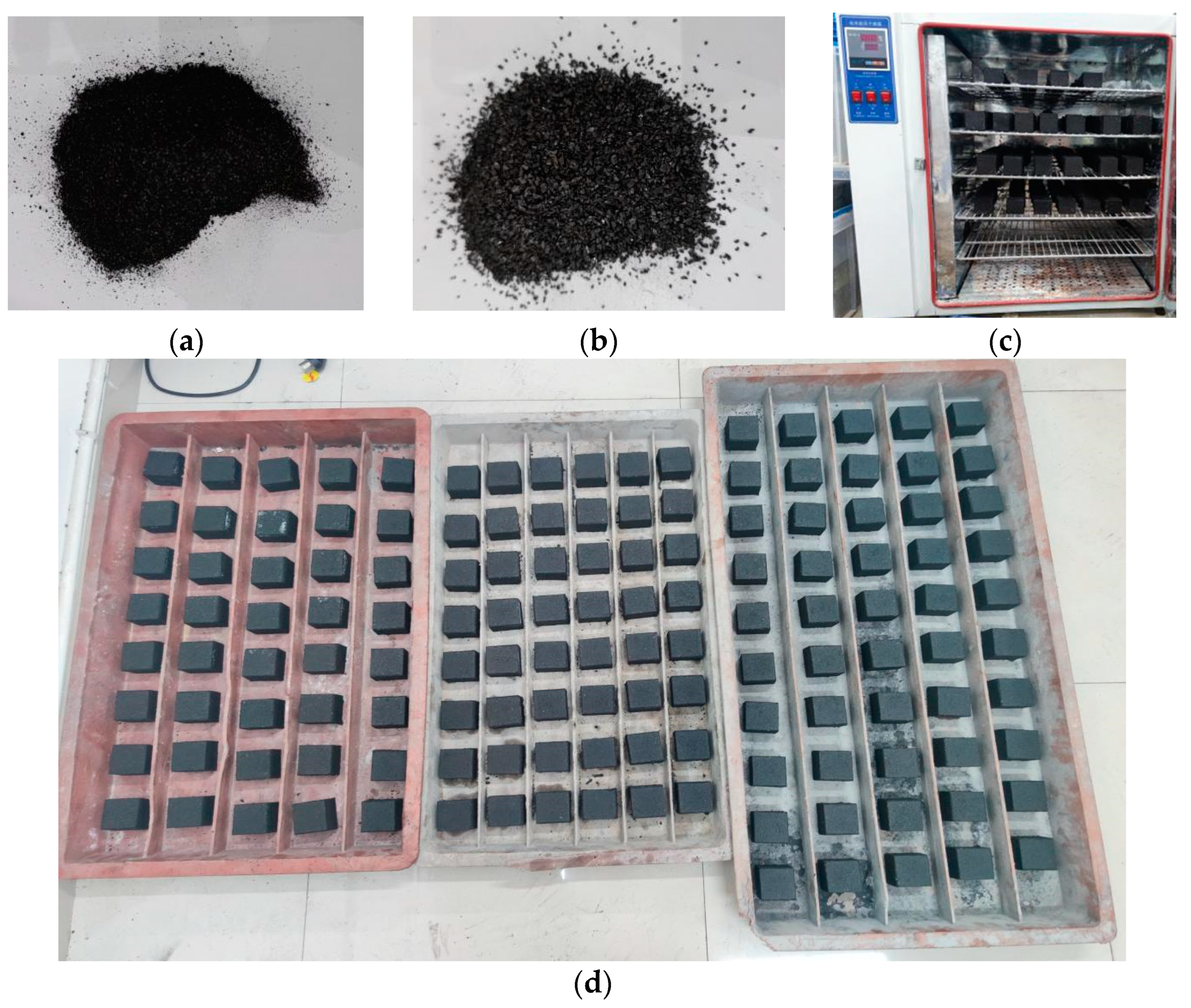



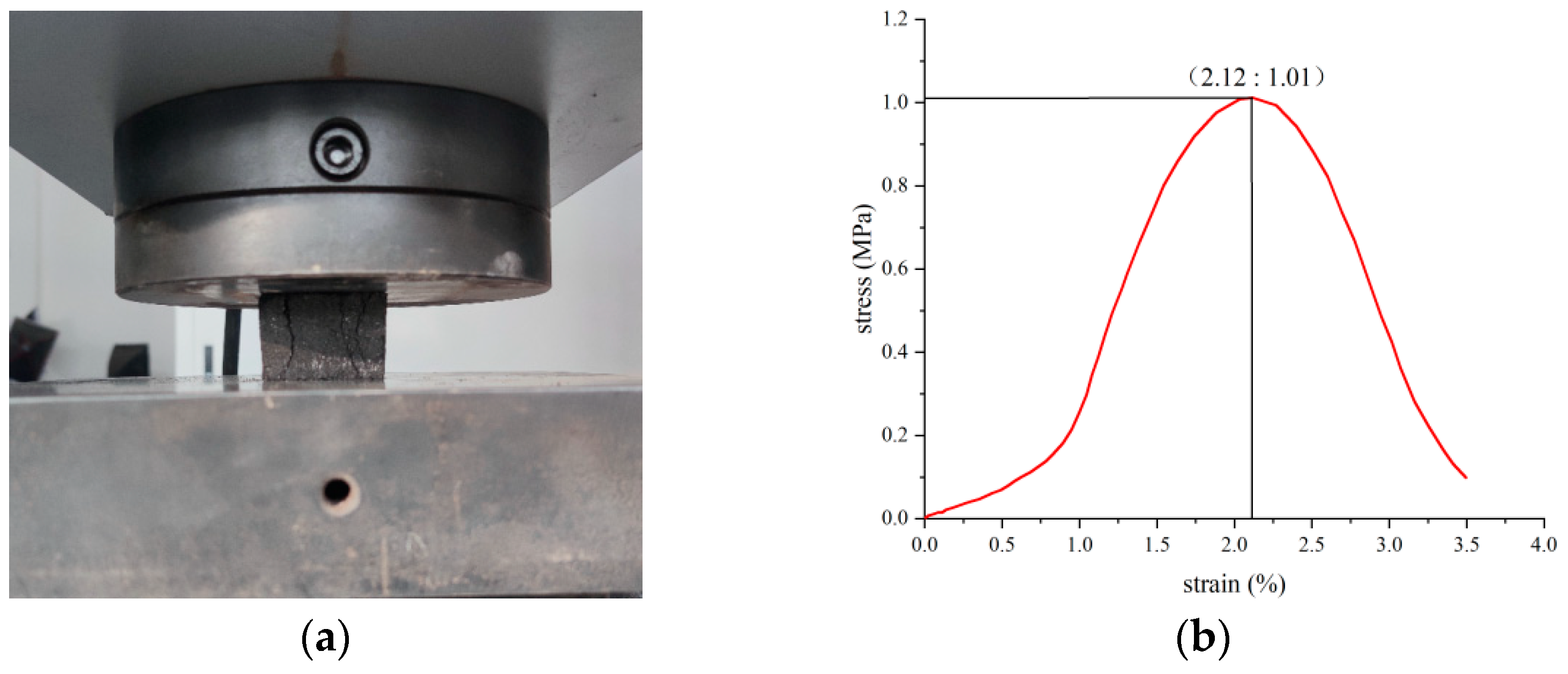

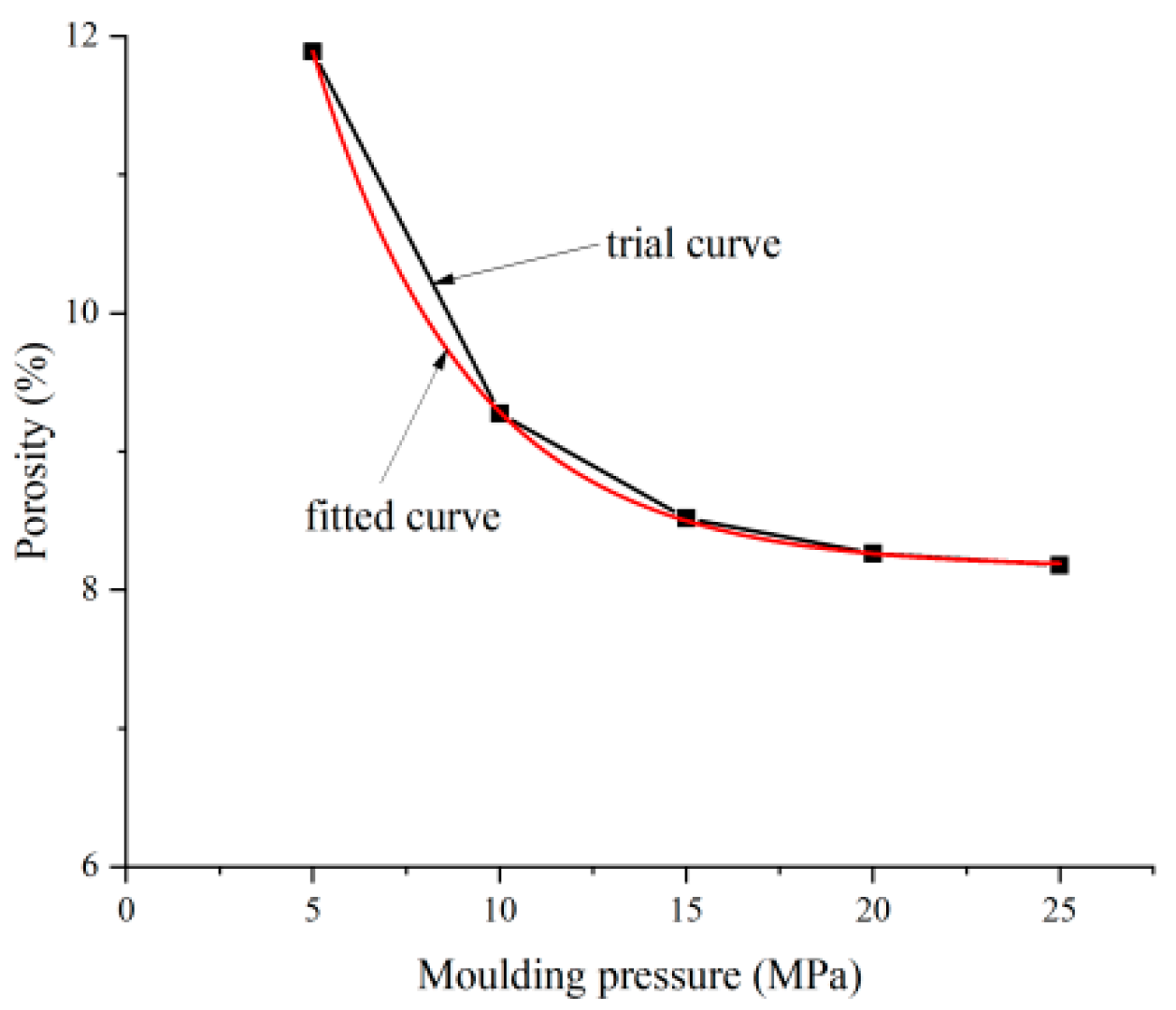
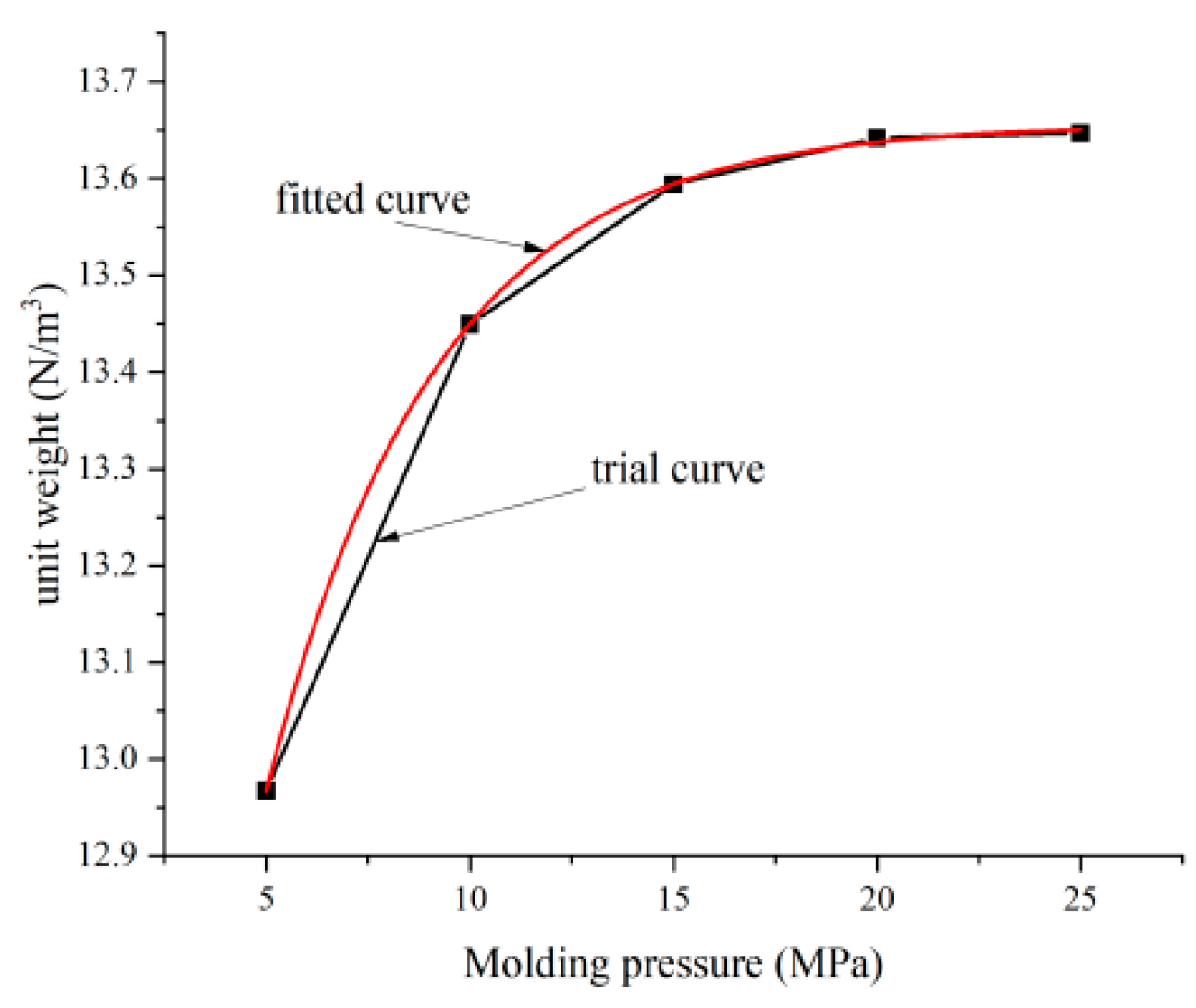
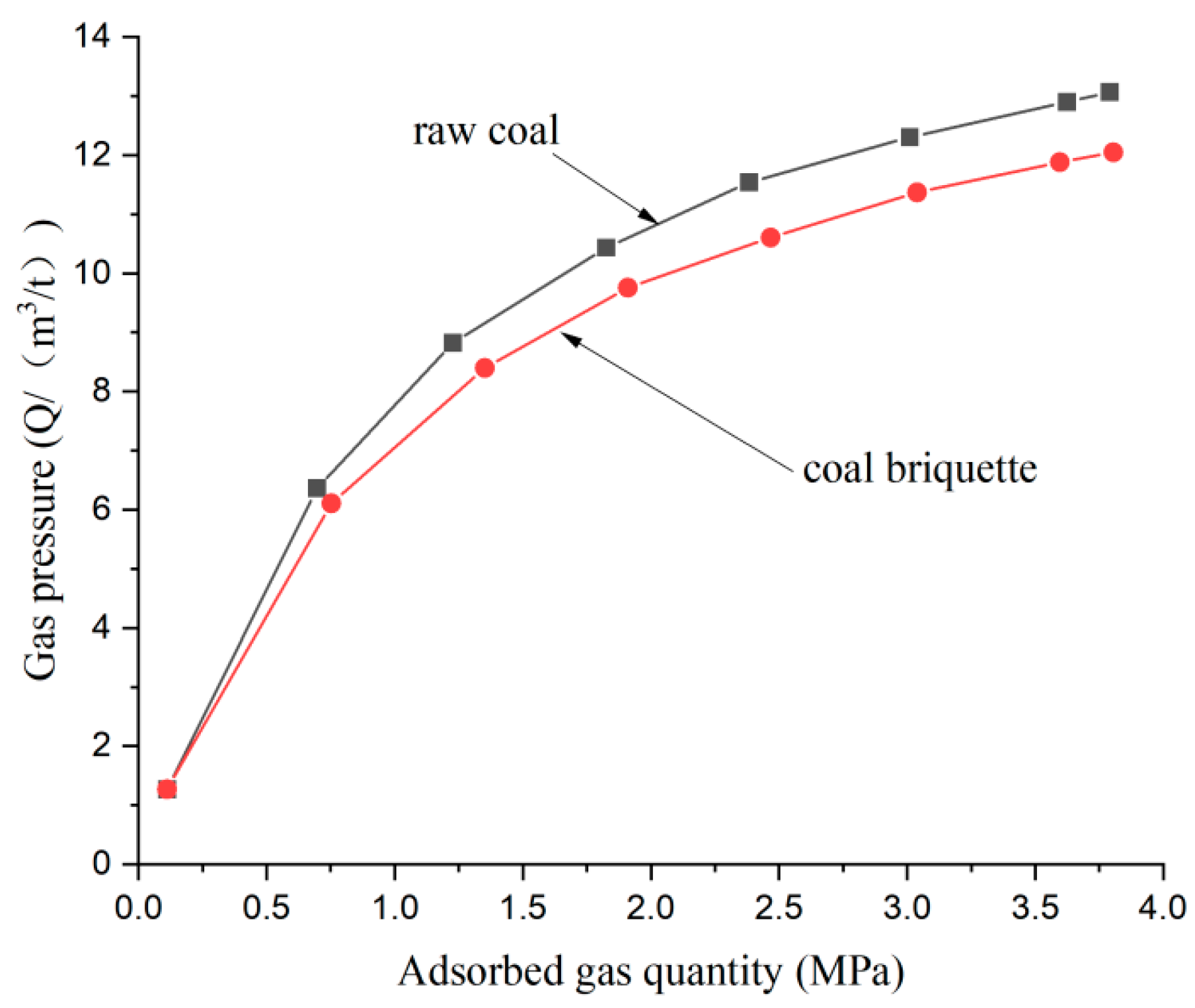
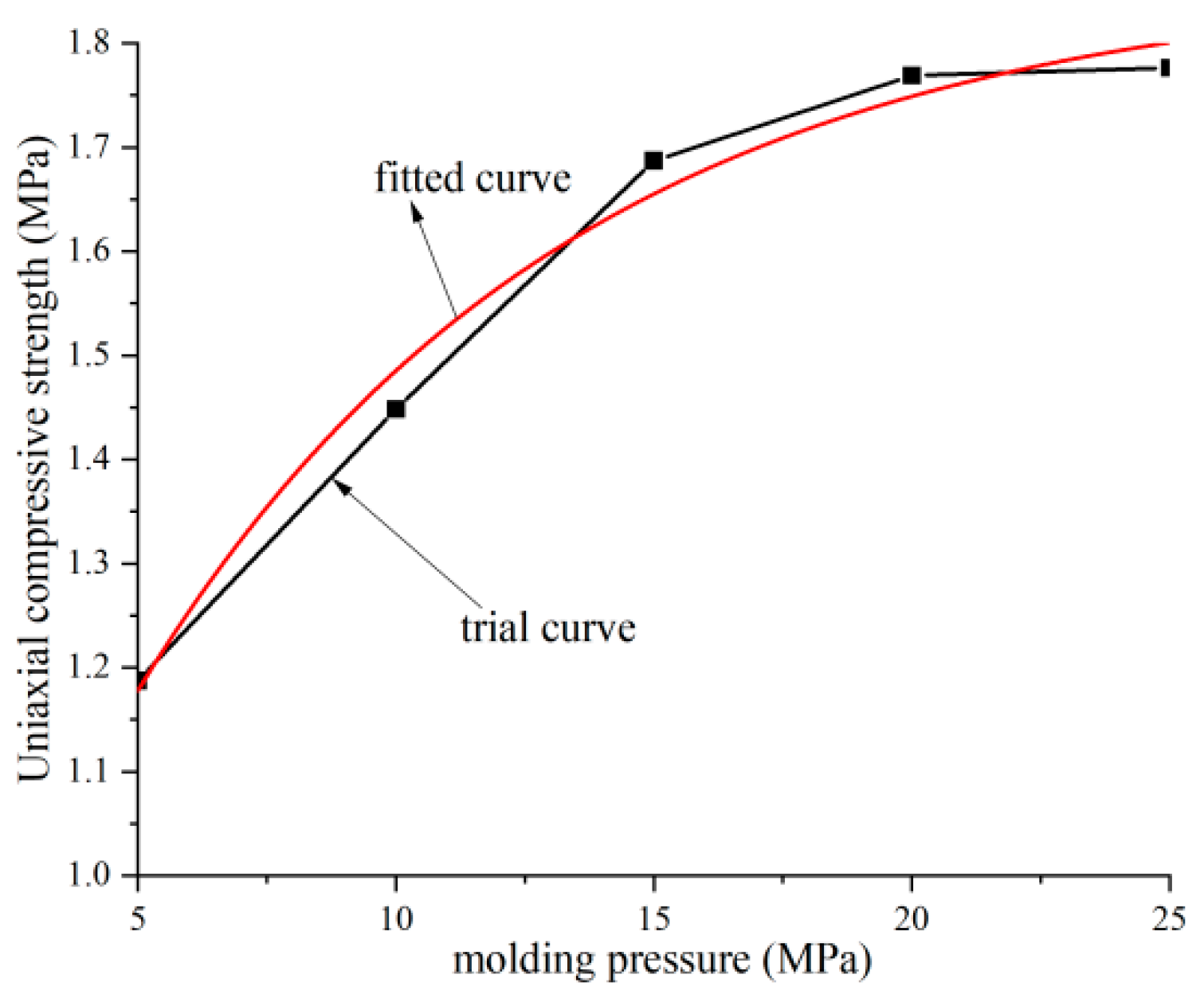
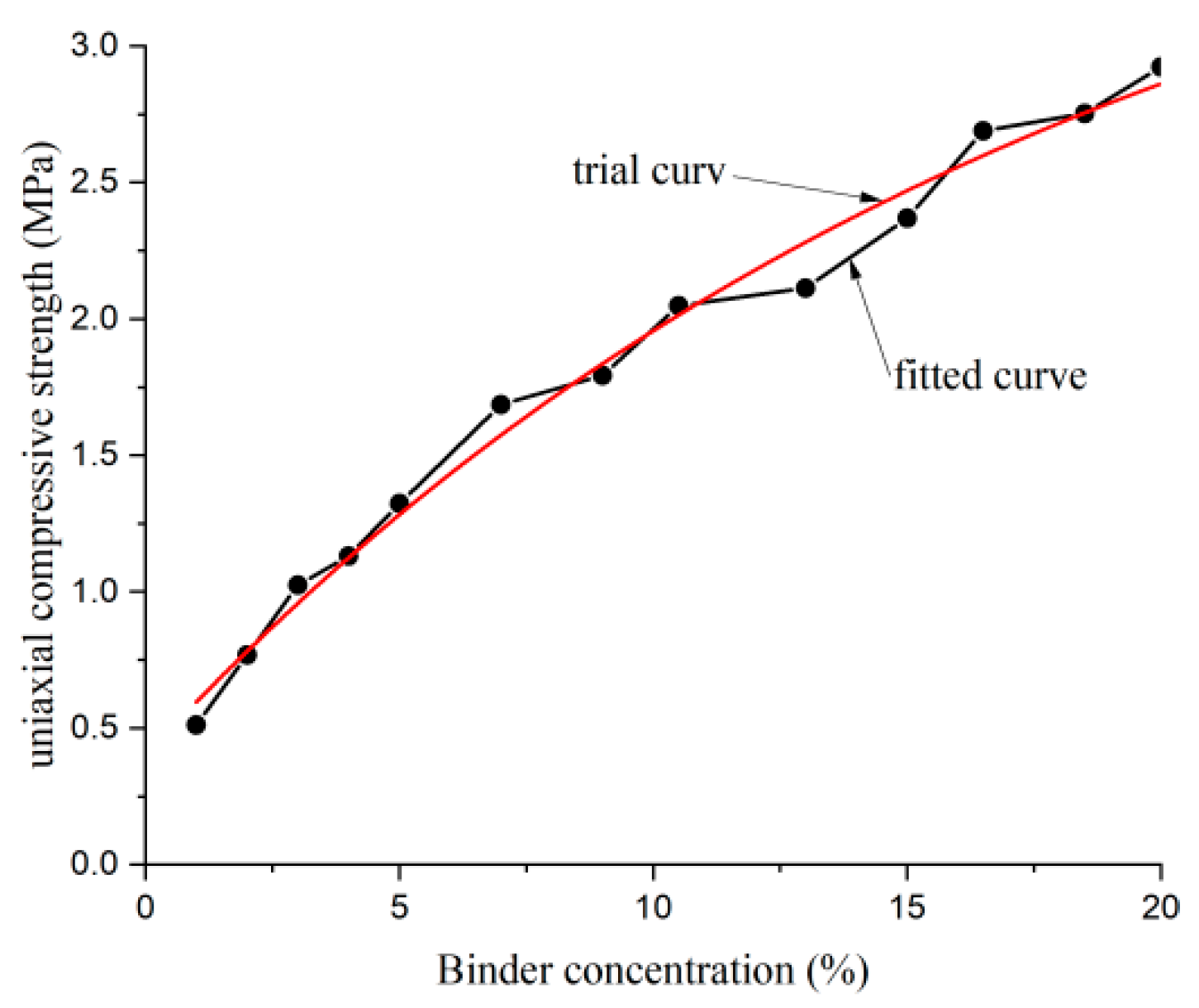
| Specimens | Uniaxial Compressive Strength/MPa | Elasticity Modulus/GPa | Tensile Strength/MPa | Internal Friction Angle/(°) | Cohesion/MPa | Poisson’s Ratio/µ |
|---|---|---|---|---|---|---|
| Raw coal | 24.5 | 4.450 | 2.35 | 30 | 0.850 | 0.24 |
| Specimen 1 | 0.8 | 0.125 | 0.09 | 29 | 0.080 | 0.25 |
| Specimen 2 | 1.7 | 0.265 | 0.16 | 28 | 0.170 | 0.24 |
| Specimen 3 | 2.6 | 0.495 | 0.25 | 30 | 0.275 | 0.25 |
Publisher’s Note: MDPI stays neutral with regard to jurisdictional claims in published maps and institutional affiliations. |
© 2022 by the authors. Licensee MDPI, Basel, Switzerland. This article is an open access article distributed under the terms and conditions of the Creative Commons Attribution (CC BY) license (https://creativecommons.org/licenses/by/4.0/).
Share and Cite
Zhan, K.; Xue, J. Development and Properties of a Similar Material to Coal. Energies 2022, 15, 6922. https://doi.org/10.3390/en15196922
Zhan K, Xue J. Development and Properties of a Similar Material to Coal. Energies. 2022; 15(19):6922. https://doi.org/10.3390/en15196922
Chicago/Turabian StyleZhan, Keliang, and Junhua Xue. 2022. "Development and Properties of a Similar Material to Coal" Energies 15, no. 19: 6922. https://doi.org/10.3390/en15196922





